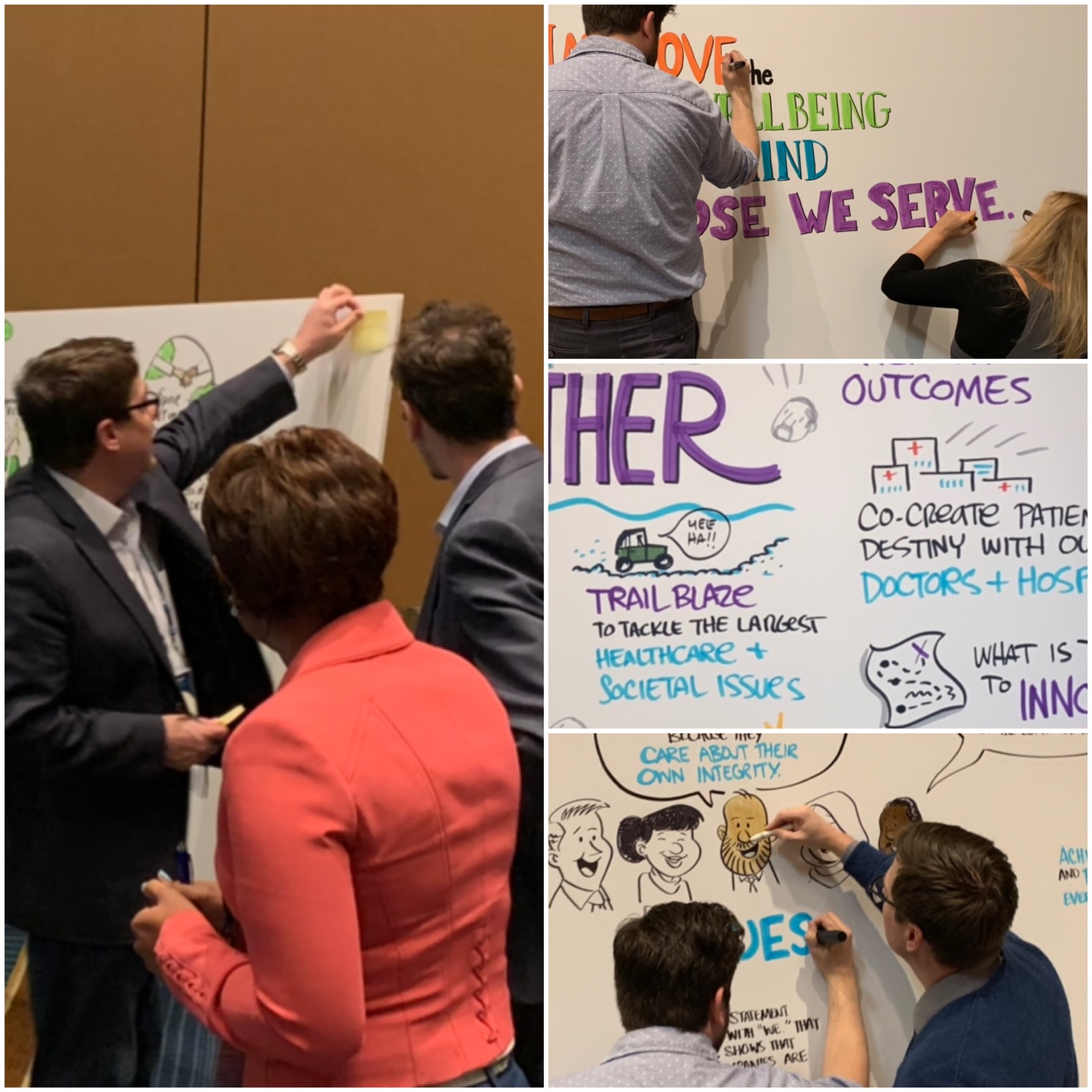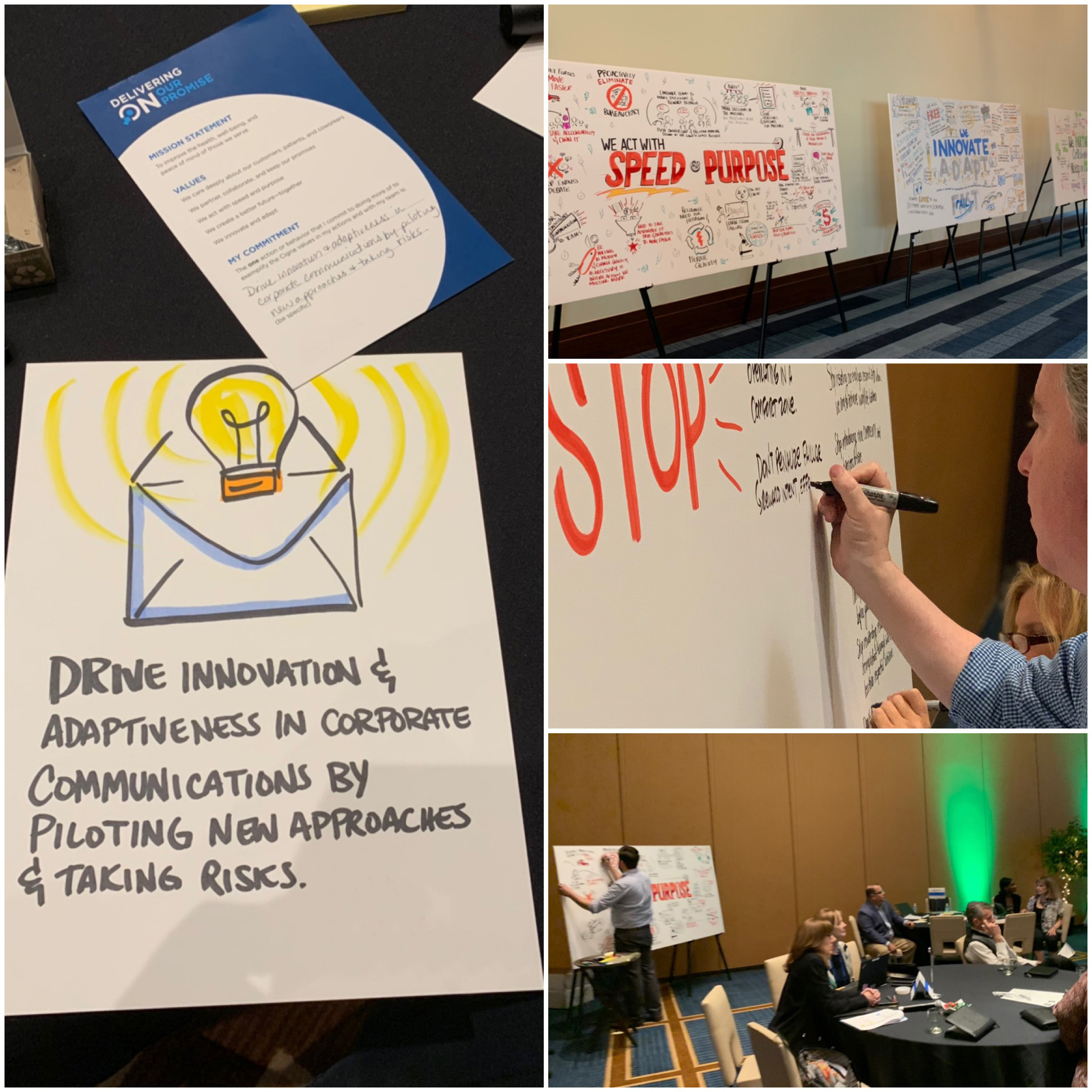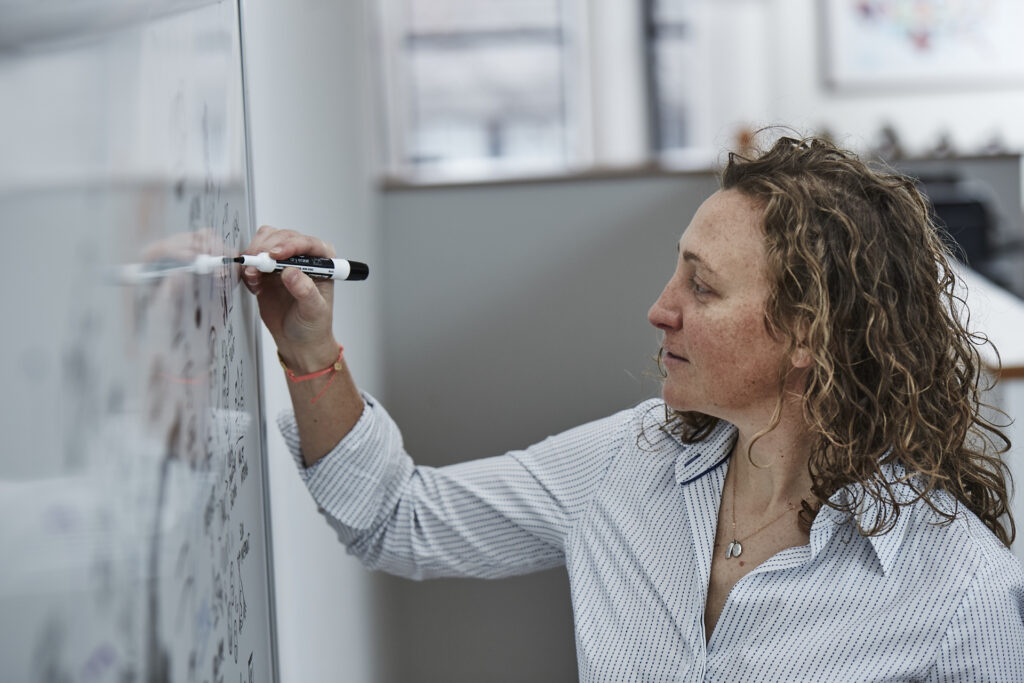Visualize the “Elephant” with Live Sketching
By Drew Crowley (alum)
You may have heard the Indian fable about six blind men who encounter an elephant. Each examines it in turn. One feels the tusk, another the trunk, and so on. As they share what they’ve experienced with each other, they come away with six conflicting reports.
Each man’s description is valid in that it accurately describes their experience. To the man touching the elephant’s side, it’s a wall, to the man touching the tail, it’s a whip. But none of them capture the totality of the elephant.
It’s a challenge we often come across in business communication. When it comes to describing a strategic vision, a change management campaign, a procurement process, we are, all of us, blind sojourners feeling our way around an elephant. At Tremendousness, we have a surefire way to bring all the parts of that elephant together.
We call it Live Sketching…
 …but just as words can be poor tools in describing the whole of a strategic vision, they also are somewhat inadequate when it comes to naming this particular arrow in the visual thinking quiver. It’s a nebulous concept, and you’ll have heard it called other things: Graphic Recording, Sketch Notes, Reflective Listening. And all of these terms apply.
…but just as words can be poor tools in describing the whole of a strategic vision, they also are somewhat inadequate when it comes to naming this particular arrow in the visual thinking quiver. It’s a nebulous concept, and you’ll have heard it called other things: Graphic Recording, Sketch Notes, Reflective Listening. And all of these terms apply.
The essence, regardless of what you call it, is getting visuals out of people’s heads and into the world where everyone can see them—all while the discussion is happening in real time. It’s a practice that is simple in premise and complex in execution.
Generally speaking, as a discussion is taking place an artist (or graphic recorder, or visual practitioner—again, call them what you wish) uses pictures and words to capture what’s being said visually.
The drawing can happen on a whiteboard, flipchart, poster board, ream of butcher paper, or foam board. Honestly, any surface with a lot of space for drawing will work (though we try to avoid drawing directly on walls).
You’d be surprised at how quickly these drawings change the energy of a room and the momentum of conversation.
What’s it For?
Live sketching has many applications ranging from experiential to journalistic. Because it is the act of capturing information visually, its utility is extremely versatile. Nearly all forms of live sketching fall under two broad categories: scribing and capture.
Scribing
This is the core element of live sketching. The literal action of drawing what’s being discussed as it happens. It’s immediate and energetic and the outputs of scribing are usually the drawings themselves.
Scribing, on its own, works really well in conference settings or any setting where the conversations are fast-paced and you’re looking for a creative, visually appealing way to enhance discussions. Here are a few outputs from Scribing:
- Mural: Any discussion where the scope is contained to particular subject can produce a collaborative visual that each attendee has a hand in.
- Record of the day: Ideal in conference and large workshop settings. Scribing during keynote speakers, panels, and activities creates a large body of visuals that reflect all of the work and learnings that came out of the day(s).
- Attendee/participant quotes: Like the mural, this can be a great way to give your attendees a sense of ownership over what’s being drawn. You start with a large board with a title, something like “One word that describes my experience.” Attendees can add their words and a live sketcher can come in behind them and draw a visual to go with it.
Capture
Capture is almost identical to scribing with one key distinction: you’re curating the information. When scribing, you’re often replicating as much of what you are hearing as you can. With capture, you’re being more selective about what goes up on the board. In some cases, graphic recorders may even have predetermined templates or frameworks that are used to collect the information.
Capture is the application we at Tremendousness use most often. And while the capture itself becomes an output of the day, there are many deliverables that can be yielded from the information gathered in a capture session: Here are a few examples:
- Visual maps and infographics
- Presentations and slide decks
- Storyboards
- Animated videos
Honestly, you can create nearly anything using the information gathered during a capture session, as long as you know what information you need beforehand.
But in the end they’re just drawings, right?
The drawings are the most obvious outcome of scribing and capturing but there are less tangible rewards yielded from live sketching as well.
Momentum
 The energy of a room has a considerable effect on how productive a given meeting or workshop can be. The act of drawing live, while a discussion is happening creates an immediate shift in the room dynamic. Participants often feel compelled to add to the ever-growing picture. Usually by simply partaking in the conversation in an engaged manner, and at times by picking up a marker and drawing themselves.
The energy of a room has a considerable effect on how productive a given meeting or workshop can be. The act of drawing live, while a discussion is happening creates an immediate shift in the room dynamic. Participants often feel compelled to add to the ever-growing picture. Usually by simply partaking in the conversation in an engaged manner, and at times by picking up a marker and drawing themselves.
Clarity
The moment you visualize something for everyone to see the nuances between our perspectives become more clear. A conversation that might take hours to unpack can be resolved in minutes. Live sketching pushes you further down the line, faster.
Alignment
One of the most powerful results we see is how quickly a room can become aligned around an idea when it is visualized in front of them. If we go back to our elephant metaphor we see how easy it is for an individual’s frame of reference to color their perspective on a given topic. Often, we feel that we’re talking about the same things when we really aren’t. Live sketching helps clear the fog and ensures everyone is talking about the same thing.
It’s fun
The simple fact is live sketching makes any meeting or workshop more enjoyable. It can add levity and light-heartedness to otherwise mundane experiences.
“I feel seen,” said the Elephant.
Live sketching gives you a view into any topic from every conceivable angle. Visualizing just one aspect of your story, message, or conversation opens doors to new ideas and fresh takes on concepts that may have been running around you and your colleagues’ heads for a while.
Add it to your next engagement, and you’ll come away with a greater understanding of your chosen topic. And with that understanding comes better and more actionable strategies.
